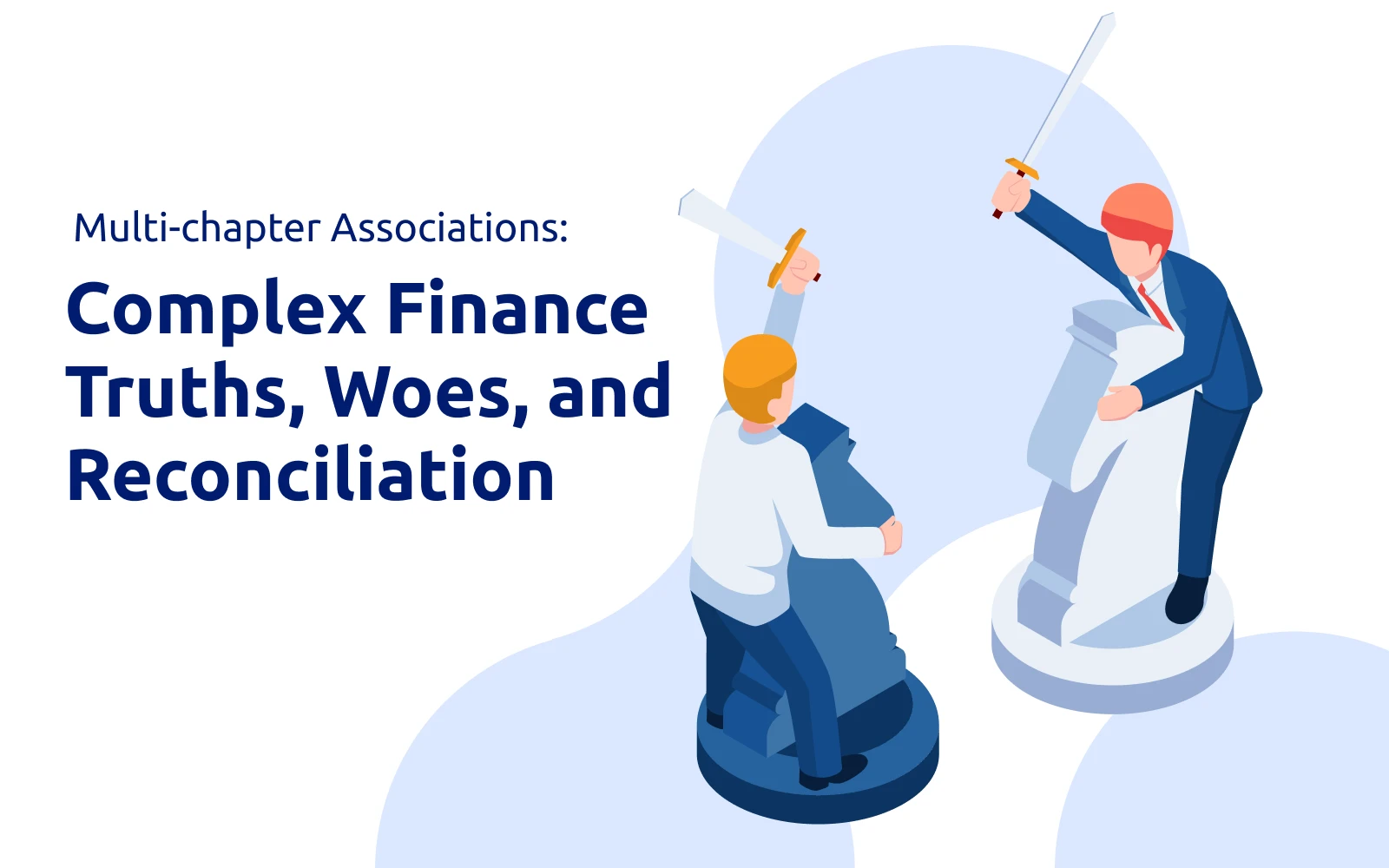
Multi-chapter organizations, such as associations, fraternities, and non-profit organizations, have a unique structure that poses several financial challenges.
These organizations often have multiple chapters located in different regions or countries, each with its own budget, revenue streams, and expenses. Managing finances across these tiers can be complex, and inconsistent financial reporting can lead to confusion and mistakes.
In this article, we will explore some of the complex financial truths and woes that come with running a chapter-based organization, as well as some strategies for reconciliation and success.
Quick Reads
What Financial Challenges Do Multi-Chapter Organizations Face?
1. Complex Financial Processes
One of the most significant challenges chapter-based organizations face is the complexity of their financial workflows. They typically have a wide range of income streams and expenses, including membership dues, fundraising events, and social activities.
Some organizations have different financial ties between their main umbrella and individual chapters, where money may flow either up from the chapters or down to the chapters depending on their membership relationship.
For instance, in some cases, funds may be collected from the individual chapters and pooled at the main umbrella level, while in other instances, funds may be disbursed from the umbrella to individual chapters.
These financial ties can have a significant impact on the financial health and sustainability of both the main organization and individual chapters.
Typically, the experience and process of reconciling these ties is manual regardless of the relationship and scale of the organization. This adds up to many hours of labor across stakeholders in organizations, and in many cases puts strain on the relationship between chapters and the organization.
For instance, an organization with 52 chapters is probably going to have trouble 52 weeks out of the year due to vacations alone, let alone volunteer chapter organizations, where chapter leaders have other priorities.
In many instances there are discrepancies about the actual dues amount owed as well, putting further stress on the organization and more work, as well as doubt about the transparency of others involved.
It’s a tough part of the process, especially when at the end of the day these organizations are supposed to be on the same team and be executing a strategy for the mission at hand.
2. Fundraising

Another challenge for chapter-based organizations is fundraising.
Each chapter may have its own unique fundraising needs and challenges, and finding ways to coordinate fundraising efforts can be difficult. This makes it difficult for the headquarters to ensure that the revenue streams are consistent across all chapters.
As a result, some chapters end up having more resources than others, which can create disparities in the services and programs offered.
3. Managing Financial Reporting
Multi-chapter organizations also struggle in consolidating financial reports because of their complex financial models.
Each division has its own bank accounts, accounting systems, and financial reporting requirements, which makes it difficult for the headquarters to consolidate financial data and produce accurate statements.
Also, chapter leaders may not have the financial knowledge and expertise needed to effectively manage budgets, create accurate financial reports, and make informed financial decisions.
This can lead to inconsistencies in financial reporting and budgeting, ultimately affecting the organization's finances.
4. Maintaining Transparency and Accountability
Boards, treasurers, and financial policies are separate for each chapter, causing discrepancies in financial practices and making it harder to synchronize financial practices across chapters.
Also, the parent organization provides chapters with a high degree of autonomy. Though it helps them respond quickly to local issues, it can also make it difficult to maintain consistency and transparency across the organization.
5. Balancing Local vs. National Priorities
Multi-chapter organizations often struggle to balance local and national priorities. They have to serve diverse and geographically dispersed communities with varying needs and priorities, resulting in some chapters getting more attention than others.
This can lead to tension between chapters, making it more challenging to allocate resources in a way that satisfies everyone.
6. Managing Growth
As multi-chapter associations grow, they may face challenges in managing their finances effectively. Expanding operations can be costly, and it can be challenging to scale financial management processes to accommodate growth.
Additionally, with more chapters, there is a greater risk of financial fraud and mismanagement, which can further complicate the process.
Financial Reconciliation and Success Strategies

Despite the challenges mentioned above, chapter-based organizations can be successful and rewarding for their members.
They provide a sense of community and support that can be hard to find elsewhere, and they often have a strong sense of purpose that motivates members to work together towards common goals.
However, to be successful, these large multi-tier associations must be willing to tackle the complex financial issues that come with running a membership-based group.
Establish Clear Communication Channels
Establish clear communication channels between the central finance team and the chapter leaders to ensure that financial information is shared in a timely and accurate manner.
This can include regular financial reports, meetings, and updates on financial policies and procedures.
Develop a Standard Chart of Accounts
Develop a standard chart of accounts that all chapters must use. It will ensure that financial data is uniform and can easily be consolidated for analysis and reporting.
Implement a Central Management System
Implement a centralized management system that consolidates the financial information from all the chapters. This provides a clear view of the overall financial health of the organization and ensures that financial information is consistent across all the chapters.

Chapter management software is one such platform that allows multi-tier organizations to centralize financial information from all their chapters. Its unified dashboard offers a clear overview of the financial status of each chapter, allowing them to identify any financial issues that need to be addressed.
In addition, it helps with budgeting and forecasting, ensuring that each chapter is operating within its financial capacity, and all the resources are allocated effectively. You can learn more about the software by signing up for a demo here.
Implement Financial Controls
Implement financial controls to prevent fraud, ensure compliance with regulations and policies, and minimize financial risk.
This can include policies and procedures for expense approvals, cash handling, and financial reporting.
Conduct Regular Financial Audits

Conduct regular financial reviews of each chapter's financial statements to identify any discrepancies or anomalies. You can either hire a central finance team or an external auditor for these audits.
Provide Financial Training
Provide financial training to all chapter leaders and volunteers to ensure they understand the organization's financial policies and procedures. This can include training on budgeting, financial reporting, and expense management.
In conclusion, multi-chapter organizations face unique financial challenges that require careful management and planning. By addressing these challenges head-on and implementing effective solutions, they can ensure their long-term success and continued ability to make a positive impact in their communities.
If you are interested in knowing more about streamlining chapter operations through digitization, feel free to contact us here.



